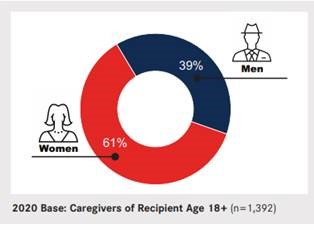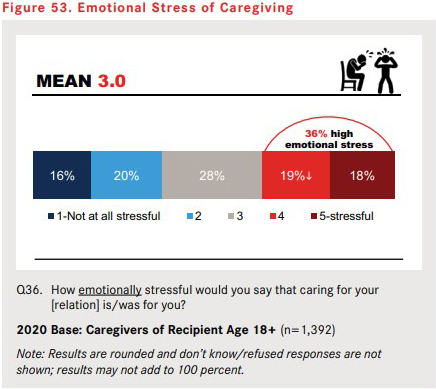Caregiving in the U.S.
Three Takeaways from the "2020 Report: Caregiving in the U.S."
Every day over 10,000 Americans turn 65 years of age and the average life expectancy in the United States of American is 78.54 years. With the increased population of older adults in our country, the need to support and understand caregivers will be more important than ever. More than 1 in 5 Americans (21.3%) are caregivers, having provided care to an adult or child with special needs at some time in the past 12 months.*
We will look at three takeaways from the most recent report conducted by the AARP and National Alliance of Caregiving. Click here to access the full report.
To learn how Felician Village at Home can help you as an older adult, or a caregiver, click here.
Who are the caregivers? 
The average age of caregivers is 49.4 years. The highest percentage of caregivers falls with in the age range of 50-64. These adults should be preparing to retire or may have recently retired, but are also providing care, most likely for a parent, in-law or spouse. Life planning discussions should focus on many more things than how much is in your 401K, what health insurance plan to choose or where to vacation. Are you prepared to provide care for an adult loved one, or do you have a plan in place for when day to day tasks become too much for you to do? Now is the time to have  conversations with your spouse, children, etc. on how you'd like to handle these things when they come up.
conversations with your spouse, children, etc. on how you'd like to handle these things when they come up.
It's not a fun conversation, but a necessary one. Being proactive about a care plan will hopefully allow for more time to spend making memories vs. to-do lists.
How does providing care affect caregivers?
It should not be a surprise that providing care for another adult can lead to negative effects on your mental and physical health. Caregiver self-rated health has decreased across multiple subgroups of caregivers, proving that consequences of caregiving does not have limitations based on age, income marital status and other demographic factors. Nearly one in four caregivers say it is difficult to take care of their own health while providing care for another person. Beyond physical health, mental and emotional health is also affected, with 36% of caregivers reporting high emotional stress. While each situation is unique and different, caregivers need to be aware of their own health, just as much as the person they are providing care for.
 |
 |
What is the role of technology in caregiving?
Technology solutions for caregiving are plentiful, but often not widely used. As the age of caregivers continue to shift, the use of technology in caregiving will gradually increase. More companies will continue to offer digital solutions and education sessions to make providing care easier, particularly from afar.


